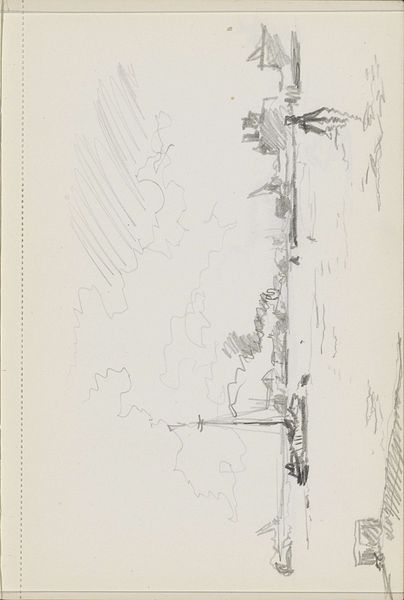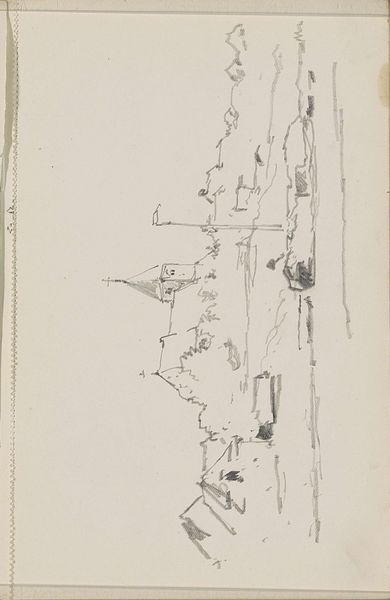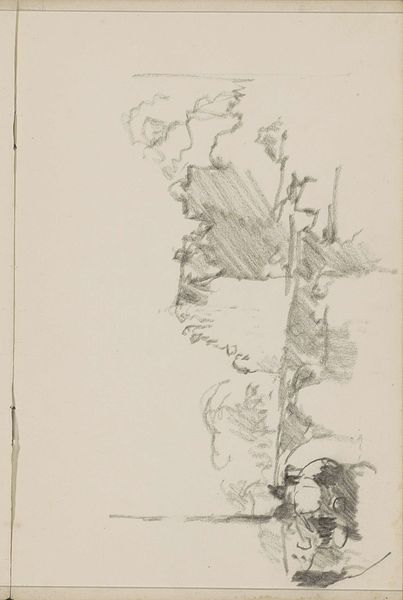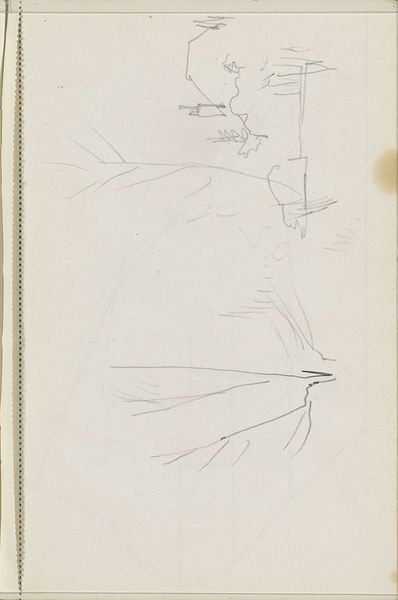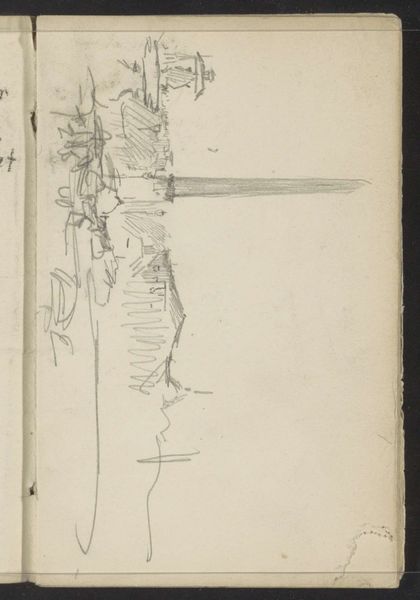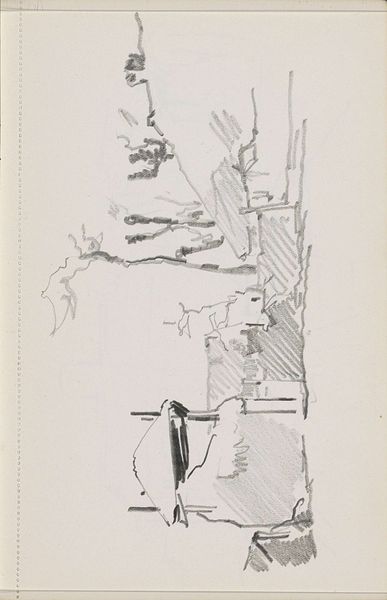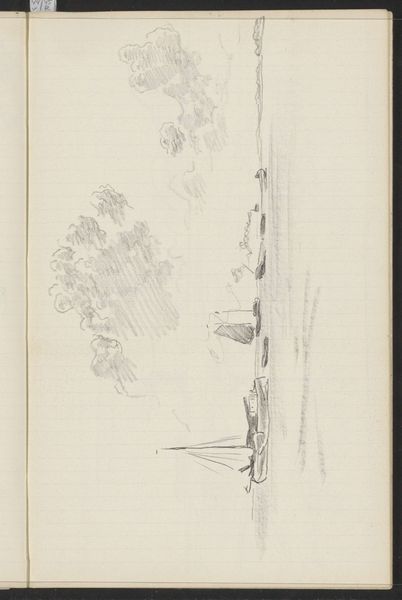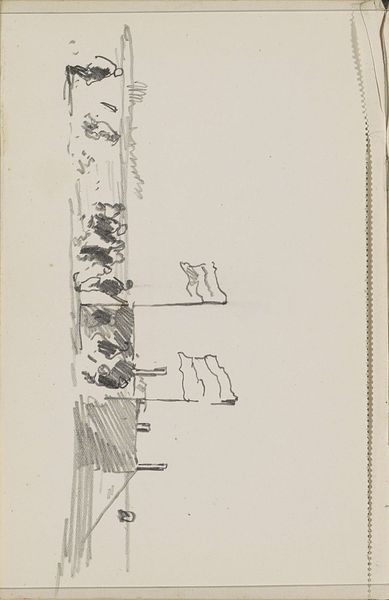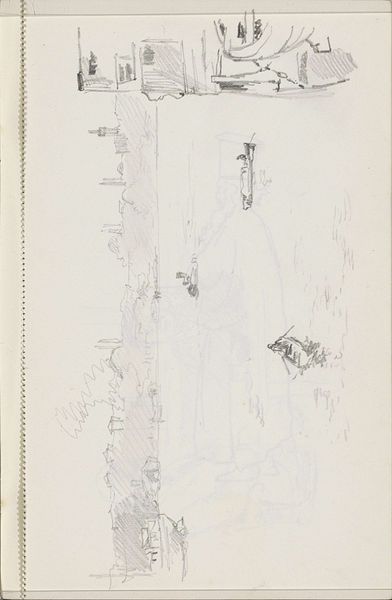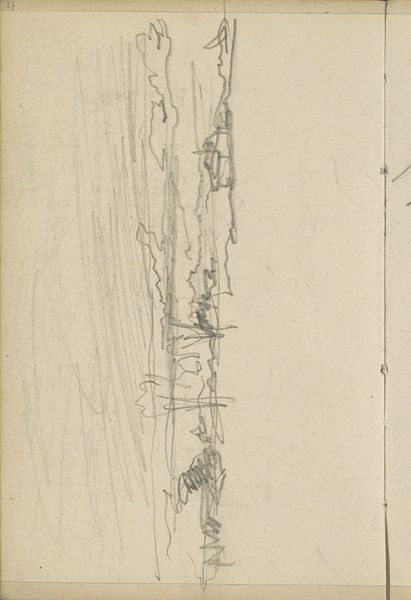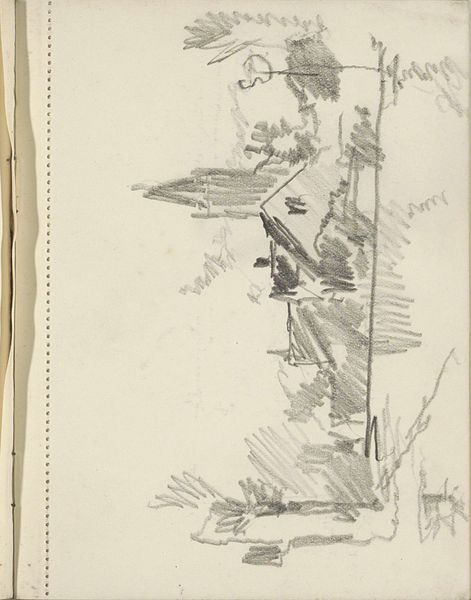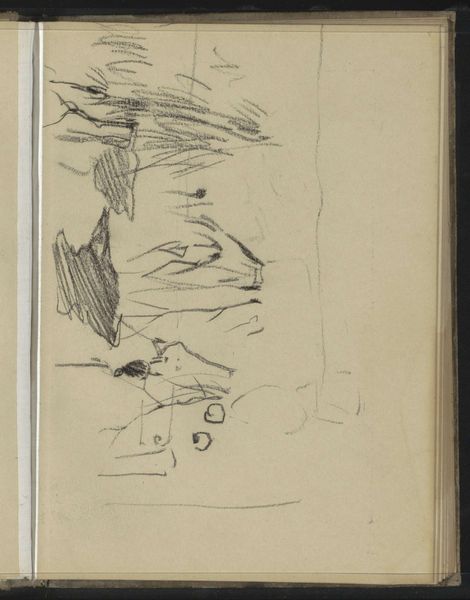
drawing, paper, pencil
#
drawing
#
landscape
#
paper
#
geometric
#
pencil
#
cityscape
#
building
Copyright: Rijks Museum: Open Domain
Curator: Welcome! Here we have Cornelis Vreedenburgh’s pencil drawing, "Gebouw met drie torens aan een weg", dating roughly from 1890 to 1946. It is an amazing city scape sketch drawn on paper. Editor: Immediately, I'm drawn to its ethereal, almost ghost-like quality. The faint pencil strokes suggest transience, as if the city itself is fading or perhaps yet to come fully into being. There's an unfinished feel that is strangely compelling. Curator: Absolutely, that's a wonderful point. The sketch provides insight into the artistic process, before any decisions were rendered to the stone; a first, informal impression of a landscape. Editor: Seeing those architectural shapes rise in the skyline makes me consider the city itself as a contested space. The buildings almost seem to be reaching, vying for dominance. Was Vreedenburgh conscious of this inherent power dynamic? Curator: The context is critical. At the turn of the century, debates over urban planning, industrialization, and social stratification were heating up. Cityscapes become stages for portraying modern life, but also political tensions. Artists had great opportunity to contribute visual responses to progressivist debates. Editor: And even now, considering the role buildings play – shaping culture and being symbols of control– that kind of power is coded in all those towers! The scale almost diminishes human agency. This makes me think of class structures reflected within architecture. Are these towers intended for dwelling or dominance? Curator: That's a very insightful connection to modern discourse! I’d say there is more research needed to pinpoint Vreedenburgh’s precise intentions and contextual meanings; what we can appreciate is the open visual invitation he offers to engage the viewer. Editor: Indeed. Despite being incomplete, this drawing has invited reflections on topics still quite relevant to contemporary life, encouraging us to be critical in thinking about architecture’s impact on our daily existence. Curator: Precisely! It shows us how buildings can hold stories and represent shifting perspectives that encourage continued questioning of progress and public perception. Editor: This drawing, therefore, becomes more than just a landscape sketch but an open discourse that evolves with each generation's new outlooks and cultural views.
Comments
No comments
Be the first to comment and join the conversation on the ultimate creative platform.
